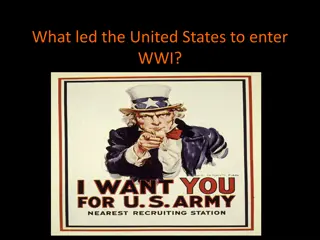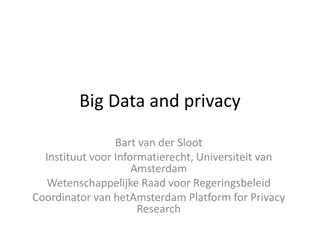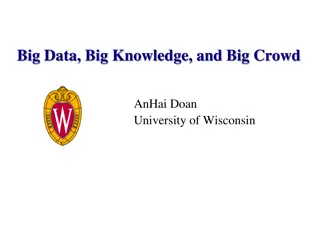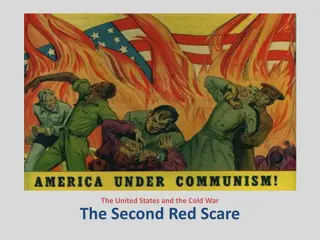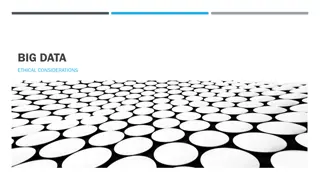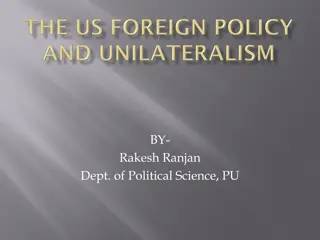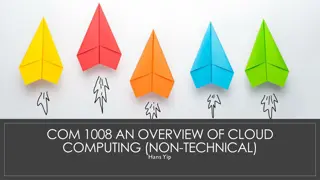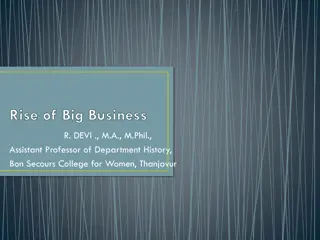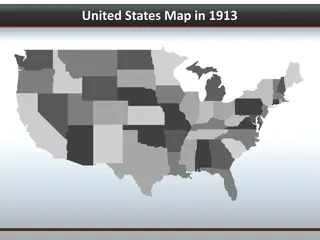Rise of Big Business in the United States: Key Concepts and Impact
The period 1865-1898 saw the rise of big business in the United States, leading to massive migrations, urbanization, and debates over national identity. Key Concept 6.1 explores the relationship between businesses and government, reasons for internal migration and immigration, and changes in the South. The Gilded Age brought about large-scale production with technological advancements, business consolidation, and foreign market expansions. Business leaders defended their status through social Darwinism, while disparities in wealth were evident in conspicuous consumption and urban poverty.
Download Presentation

Please find below an Image/Link to download the presentation.
The content on the website is provided AS IS for your information and personal use only. It may not be sold, licensed, or shared on other websites without obtaining consent from the author. Download presentation by click this link. If you encounter any issues during the download, it is possible that the publisher has removed the file from their server.
E N D
Presentation Transcript
www.Apushreview.com Period 6: 1865 1898 APUSH Review: Key Concept 6.1 Everything You Need To Know About Key Concept 6.1 To Succeed In APUSH Shout Out to Lia F., Stone K., and Davood P. Thanks for your support, you rock!
The New Curriculum Key Concept 6.1 The rise of big business in the United States encouraged massive migrations and urbanization, sparked government and popular efforts to reshape the U.S. economy and environment, and renewed debates over U.S. national identity. Page 60 of the Curriculum Framework Big ideas: What was the relationship between businesses and government? What were reasons for migration within the country and immigration during this time? In what ways did the South change and remain the same? (Change and Continuity over time)
Key Concept 6.1 I Large-scale production accompanied by massive technological change, expanding international communication networks, and pro-growth government policies fueled the development of a Gilded Age marked by an emphasis on consumption, marketing, and business consolidation. pg 60 of the curriculum framework What is a Gilded Age? (1870s 1900) Term coined by Mark Twain Increase in industrialization Many things appeared to be good on the surface, but many problems were below A: Government subsidies for transportation and communication systems: Government provided $ and land for construction of RRs Impacts of subsidies opened new markets in North America Farms, lumber, and growth of cities Redesigned financial and management structures: Monopolies sought to have sole control over an industry Maximize exploitation of resources and labor force Carnegie steel, Rockefeller - oil
Key Concept 6.1 I Cont. B: Businesses and foreign policy makers looked outside US borders to gain influence and control in markets Pacific: Hawaii calls for annexation in the 1890s (sugar) Asia: Philippines gained after the Spanish American War 1899 Open Door Policy in China; US could trade freely with China Latin America: American-owned sugar plantations in Puerto Rico C: Emergence of trusts and holding companies: Very powerful business organizations, controlled many aspects of industries How did business leaders defend their status? Social Darwinism rich argued they were a result of natural selection D: Conspicuous consumption vs. relative poverty in cities and society Wealthy encouraged cities to spend $ on museums, libraries, etc. Elaborate houses, clothing, etc. Those living in poverty often lived in tenement houses Jacob Riis How the Other Half Lives (1890) Trust = developed by Rockefeller, several companies would sell their shares and be under the control of one executive board
Key Concept 6.1 II As leaders of big business and their allies in government aimed to create a unified industrialized nation, they were challenged in different ways by demographic issues, regional differences, and labor movements. pg 61 of the curriculum framework A: Expansion of workforce: Internal migration: farmers moved to cities in increased numbers to work in factories Immigrants (across national borders): New Immigration predominantly Southern and Eastern Europe; China as well Impact of workforce expansion? Diverse workforce, lower wages, more child labor Huge supply of workers led to lower wages B: Labor vs. Management: Battles over wages, working conditions Local and national unions emerged to confront businesses Knights of Labor Terrance Powderly, skilled AND unskilled workers, women and African Americans; downfall was the Haymarket Square Riot American Federation of Labor Samuel Gompers, skilled workers only; bread and butter issues C: The South had some areas of industrialization Leaders called for a New South Henry Grady, editor of the Atlantic Constitution, called for increased industrialization in the South; textile factories began to appear in the South Sharecropping and tenant farming remained dominant Payment in land in the form of cash (tenant) or crops (sharecropping) Many African Americans were stuck as sharecroppers throughout the 1800s
Key Concept 6.1 III Westward migration, new systems of farming and transportation, and economic instability led to political and popular conflicts. pg 61 of the curriculum framework A: Government agencies and conservationist organizations sought to extend public control over natural resources: U.S. Fish Commission created in 1871 to promote and preserve fisheries in the US Sierra Club founded by John Muir in 1892, advocate the protection of wild places on earth B: Farmer organizations to resist corporate control of agricultural markets: (RRs) The Grange (1860s): sought to bring farmers together to share techniques Hoped to elect state legislators favorable to their programs Granger laws state laws that regulated RRs Southern Farmers Alliance: mostly a local organization Established stores and banks Excluded blacks .. Colored Farmers Alliance: Mostly in the Southern US
Key Concept 6.1 III C: Creation of the People s (Populist Party) Mostly farmers Causes: Growth of corporate power (RRs) high rates often hurt farmers Economic instability Panics of 1873 and 1893 hurt farmers Goals: Political reform direct election of senators; government ownership of RRs, telephones, and telegraphs Stronger government role in American economic system Graduated income tax; inflation of currency, :free silver ; abolishment of national banks D: Business interests vs. conservationists Establishment of national parks and other conservationist and preservationist measures National Reclamation Act (Newlands Act) federal $ for construction of dams, canals, and reservoirs Park system grew under Teddy Roosevelt Roosevelt used executive powers to restrict development of land
Test Tips Multiple-Choice and Short Answer Questions: Changes in business structure and their effects Role of government during the Gilded Age Plight of farmers Goals of Labor Unions Essay Questions: Comparing government during the Gilded Age vs. other time periods Ways farmers and laborers resisted corporations
Thanks for watching! Subscribe to my channel Help spread the word Questions? Comments? Leave in comments On a scale of 1- 10, how sweet is my mustache?

 undefined
undefined














